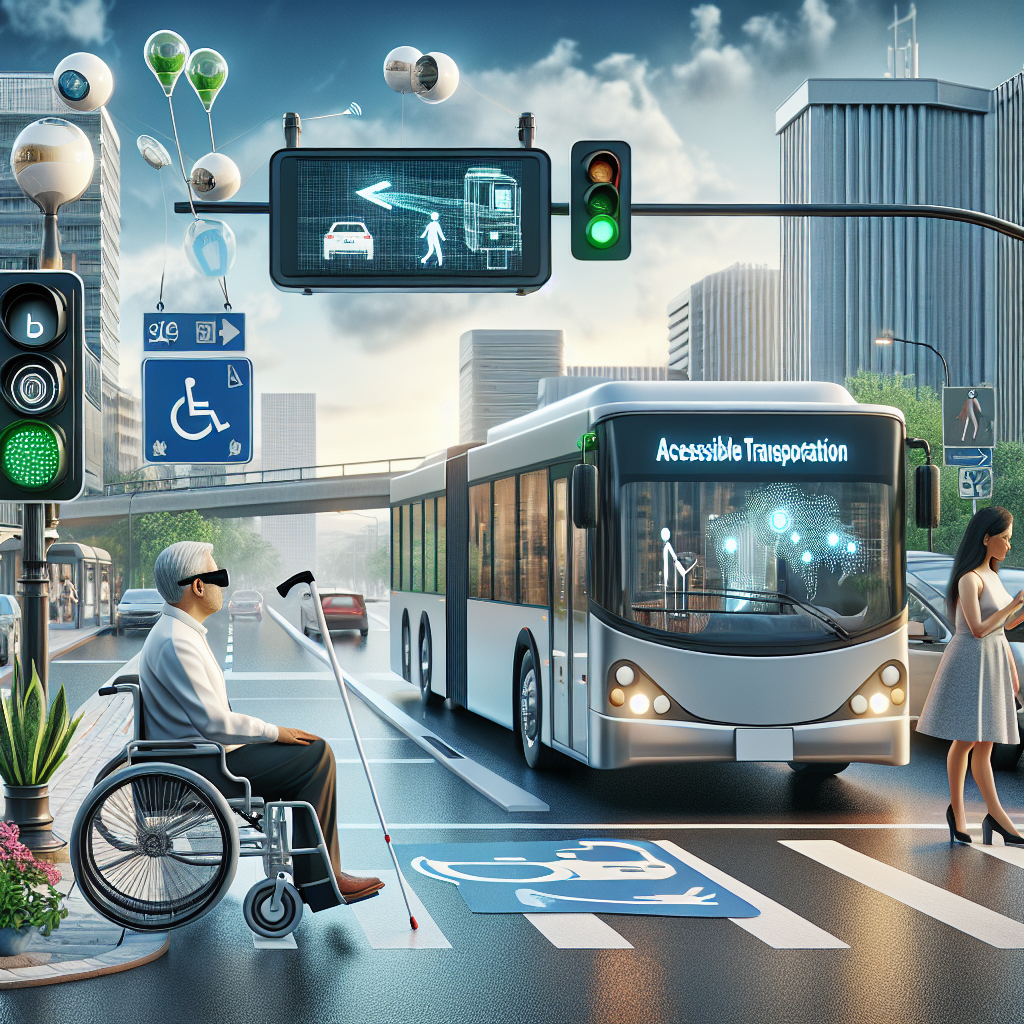The Role of Technology in Enhancing Transportation Accessibility
Transportation has always been a critical aspect of human life, influencing economic development, social interactions, and overall quality of life. However, traditional transportation systems have often been inaccessible or inconvenient for many individuals, including those with disabilities, seniors, and residents of rural areas. Fortunately, advancements in technology are transforming the transportation landscape, making it more inclusive and accessible for everyone. This article explores the various ways in which technology enhances transportation accessibility.
Revolutionizing Public Transit Systems
Real-Time Information and Navigation Assistance
One of the most significant ways technology has improved transportation accessibility is through real-time information and navigation assistance. Mobile apps and GPS technology now provide users with live updates on bus and train schedules, delays, and alternative routes. These tools are particularly beneficial for individuals with disabilities who may require additional planning to navigate public transit systems.
Automated Vehicles and Ride-Sharing Services
Automated vehicles and ride-sharing services like Uber and Lyft have also played a crucial role in enhancing transportation accessibility. Self-driving cars can be programmed to accommodate the needs of disabled passengers, such as voice commands or specialized seating arrangements. Moreover, ride-sharing services offer door-to-door transportation, which is especially useful for individuals who find it challenging to walk to bus stops or train stations.
Smart Ticketing Systems
Smart ticketing systems, which use contactless cards or mobile apps for fare payments, have simplified the process of using public transit. These systems reduce the need for physical tickets, making it easier for people with mobility issues to pay for their rides. Additionally, smart ticketing can integrate with various modes of transport, offering a seamless travel experience.
Enhancing Accessibility in Personal Transportation
Adaptive and Assistive Technologies
For personal transportation, adaptive and assistive technologies have been groundbreaking. Hand-controlled driving systems, wheelchair-accessible vehicles, and other modifications have made driving feasible for many individuals with disabilities. These technologies empower people to maintain their independence and mobility.
Electric Vehicles and Charging Infrastructure
Electric vehicles (EVs) are another area where technology is making a substantial impact. EVs are generally easier to maintain and operate, which can be advantageous for seniors and people with disabilities. The development of extensive charging infrastructure also ensures that EVs can be a viable option for everyone, regardless of their location.
Bridging the Rural-Urban Divide
Drones and Autonomous Delivery Systems
In rural areas where traditional transportation services may be sparse, technology is stepping in to bridge the gap. Drones and autonomous delivery systems are being tested to deliver essential goods and services to remote locations. These innovations can significantly improve the quality of life for rural residents by providing timely access to medications, groceries, and other necessities.
Telecommuting and Virtual Services
The rise of telecommuting and virtual services has also reduced the need for physical transportation. High-speed internet and video conferencing technologies enable people to work, attend school, and access healthcare from the comfort of their homes. This is particularly beneficial for individuals living in remote areas or those with mobility challenges.
Policy and Regulatory Support
Inclusive Design Standards
The role of technology in enhancing transportation accessibility is not limited to innovations alone; policy and regulation play a crucial role as well. Governments and regulatory bodies are increasingly recognizing the importance of inclusive design standards. These standards ensure that new transportation technologies are accessible to all individuals, regardless of their physical or cognitive abilities.
Funding and Incentives
Governments are also providing funding and incentives for the development and adoption of accessible transportation technologies. Grants, subsidies, and tax incentives can encourage companies to invest in research and development, ultimately leading to more accessible transportation options.
The Future of Accessible Transportation
AI and Machine Learning
Artificial Intelligence (AI) and machine learning are likely to play a significant role in the future of accessible transportation. These technologies can analyze vast amounts of data to optimize transit routes, predict maintenance needs, and offer personalized travel recommendations. AI-driven systems can also provide real-time assistance to passengers with disabilities, enhancing their travel experience.
Blockchain and Secure Transactions
Blockchain technology can offer secure and transparent transactions for smart ticketing systems, ride-sharing services, and other transportation-related payments. This can streamline the process of accessing various transportation services, making it easier for everyone to travel.
Collaboration and Innovation
Finally, the future of accessible transportation will depend on collaboration between various stakeholders, including governments, private companies, and non-profit organizations. By working together, these entities can develop innovative solutions that meet the diverse needs of all individuals.
FAQs
Q: How does technology improve public transit for people with disabilities?
A: Technology improves public transit for people with disabilities by offering real-time information, navigation assistance, and smart ticketing systems. Automated vehicles and ride-sharing services also provide accessible transportation options.
Q: What are some examples of adaptive technologies for personal transportation?
A: Examples of adaptive technologies for personal transportation include hand-controlled driving systems, wheelchair-accessible vehicles, and modifications like specialized seating arrangements.
Q: How are drones being used to enhance transportation accessibility in rural areas?
A: Drones are being used to deliver essential goods and services to remote locations, improving the quality of life for rural residents by providing timely access to medications, groceries, and other necessities.
Q: What role do governments play in promoting accessible transportation technologies?
A: Governments play a crucial role by setting inclusive design standards, providing funding and incentives for research and development, and implementing policies that encourage the adoption of accessible transportation technologies.
Q: What future technologies could further enhance transportation accessibility?
A: Future technologies like Artificial Intelligence, machine learning, and blockchain could further enhance transportation accessibility by optimizing transit routes, offering personalized travel recommendations, and providing secure transactions for transportation services.
In conclusion, technology plays a pivotal role in enhancing transportation accessibility, offering innovative solutions that cater to the diverse needs of all individuals. With continued advancements and collaborative efforts, the future of transportation promises to be more inclusive and accessible for everyone.

